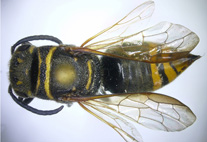Abstract
Among mountain species of Heptageniidae from Central Asia, six species belonging to the taxa Cinygmula McDunnough 1933, Himalogena Kluge 2004 and Caucasiron Kluge 1997 have all claws of the winged stages (subimago and imago) pointed. In this area Cinygmula is represented by two species: C. hutchinsoni (Traver 1939) (with pointed claws) and C. joosti Braasch 1977 (with the more typical ephemeropteroid claws); for both species all stages of both sexes associated by rearing are redescribed. The Central Asian mountain taxon Himalogena includes seven species: Rhithrogena (Himalogena) tianshanica Brodsky 1930, Rh. (H.) pamirica sp. n., Rh. (H.) carnivora sp. n., Rh. (H.) semicarnivora sp. n., Rh. (H.) stackelbergi Sinitshenkova 1973, Rh. (H.) gunti sp. n. and Rh. (H.) nepalensis Braasch 1984; for five of them, all stages of both sexes associated by rearing are redescribed; Rh. (H.) semicarnivora is known as male imagoes reared from larvae; Rh. (H.) nepalensis formerly known only as larvae, is redescribed based on an anomalous female imago (with gynandromorphism caused by helminth in abdomen) reared from the larval stage. Among these species, Rh. (H.) tianshanica, Rh. (H.) pamirica, Rh. (H.) carnivora and Rh. (H.) semicarnivora have mandibles and the labrum modified for carnivorism, while the other three species have the usual Rhithrogena mouth apparatus. Imagoes and subimagoes of Rh. (H.) pamirica, Rh. (H.) carnivora, Rh. (H.) gunti and Rh. (H.) nepalensis, have both claws of each leg pointed, while the other species have ephemeropteroid claws. Corrections to the description of Rh. minima Sinitshenkova 1973 claw denticulation and to original figure references are given. The taxon Ironopsis/g1 is represented by two species in the Central Asian mountains: Epeorus (Caucasiron) guttatus (Braasch & Soldán 1979) (with pointed claws) and Epeorus (Ironopsis) rheophilus (Brodsky 1930) (with ephemeropteroid claws); for both species all stages of both sexes associated by rearing are redescribed. The character distribution patterns of pointed and ephemeropteroid claws within mayfly phylogeny leads one to assume that both types of claws repeatedly change back and forth within Ephemeroptera. However, within Heptageniidae, those species whose winged stages have pointed claws have overlapping ranges of distribution limited to high mountain systems of Central Asia; their larvae inhabit the same biotopes (stones in rapid streams), have the same habitat and can come into contact with one another when they aggregate on a stone. These observations allow for a hypothesis that explains the repeated change to pointed claws from ephemeropteroid claws among various Heptageniidae species via horizontal transfer of some hereditary factor during the evolutionary history of each of those species with the peculiar claw morphology.

